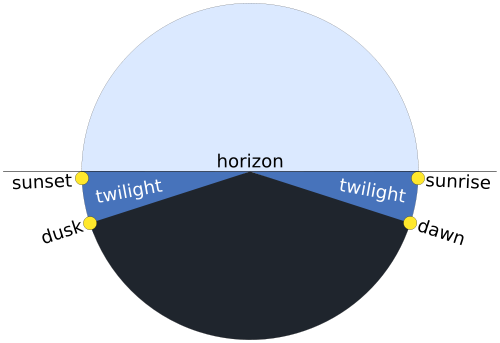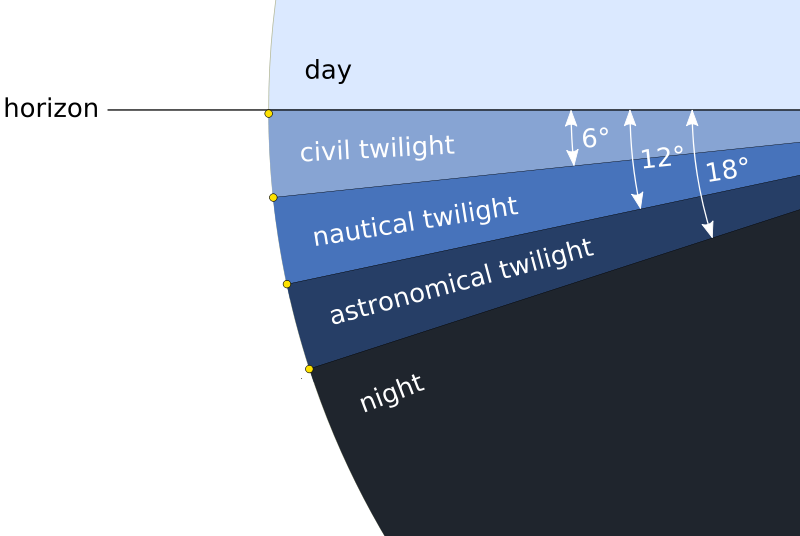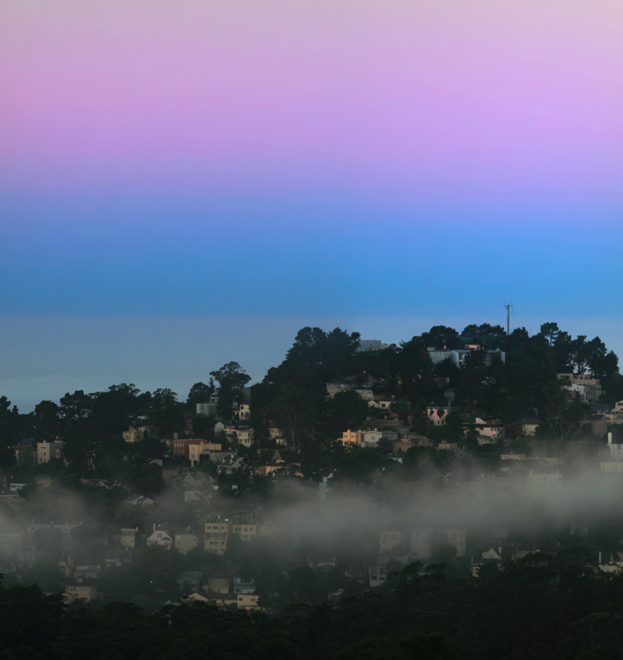
Tomorrow is ANZAC Day, and some of you will be getting up to go to dawn services.
What is the dawn, anyway? Sure, it’s when the Sun comes up, but did you know there’s a difference between dawn and sunrise?
Sunrise: not what it seems
Sunrise is the moment when the edge of the Sun seems to peep over the horizon. “Seems”, because the Sun hasn’t actually reached the horizon yet: in fact, its image is refracted — the light rays are bent — by the Earth’s atmosphere. The average amount of refraction is 34 arcminutes (an arcminute is a sixtieth of a degree); however, it varies, depending on atmospheric conditions. (Thirty-four arcminutes is quite a lot: if you stand 100 m away from a target, 34 arcminutes is the angular distance between the bullseye and a point one metre off to the side of it.)
On top of that, the Sun isn’t just a point of light, but an extended source, a disk about 16 arcminutes in radius.
The combination of these two factors means that sunrise actually occurs when the Sun’s centre is 50 arcminutes, or almost one degree, below the horizon.

Dawn
Dawn, on the other hand, is the beginning of morning twilight — the time when the sky begins to lighten, well before the Sun shows its face.
Astronomers, sailors and ordinary folk have different kinds of dawn.
Astronomers — optical astronomers, anyway — like things to be really dark. For them, dawn occurs when the middle of the Sun’s disk lies 18 degrees below the horizon in the morning.
Nautical dawn takes place when the Sun is 12 degrees below the horizon, while civil dawn occurs when it is just six degrees below the horizon.

The Earth’s shadow
Shortly before sunrise, if you look in the opposite direction to the Sun (i.e. to the west), you may see a dark blue or greyish-blue band in the sky. This is the shadow that the Earth itself casts on its lower atmosphere. The pink band that appears above it is called the Belt of Venus: it is the Earth’s upper atmosphere, illuminated by the Sun’s rays. Both the shadow and the Belt can be seen at sunrise or sunset.

“And tomorrow the sun will shine again”*
Dawn is synonymous with hope. For Christians, Easter morning marks the resurrection of Christ. At the Neolithic tomb of Newgrange in Ireland, when the Sun rises on the winter solstice its rays pass straight into the heart of the mound: we cannot know exactly what this meant to the tomb’s builders, but they went to a great deal of trouble to make it happen.
If you’re never up early enough to see the dawn, don’t despair: here’s a nice video of sunrises in South Australia to remind you of what it’s all about.
Source: YouTube . Posted by VK5SW.
* The English translation of the first line of a beautiful song, “Morgen”, by German composer Richard Strauss.

